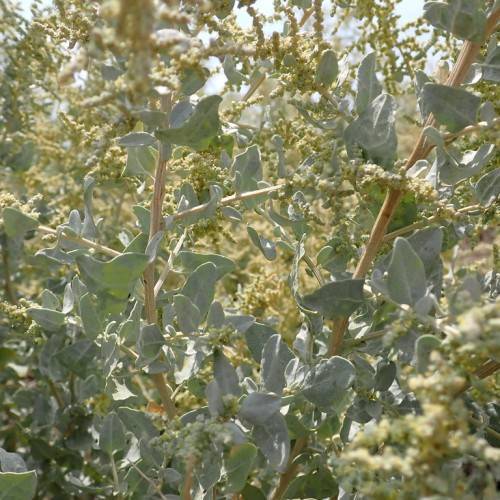
Fourwing Saltbush
Atriplex canescens
Watering:
Minimal
Hardiness Zone:
Sun:
full sun,part shade
Fruits:
Fruits Ready In
Leaf:
Yes
Growth Rate:
Low
Drought Tolerant:
Yes
Salt Tolerant:
Yes
Care Level:
Low
watering
Silverscale Saltbush thrives in dry climates and requires patience and minimal tending. It requires full sun for optimal growth, so select a location that receives direct sunlight each day. In general, Silverscale Saltbush should be watered deeply and less often. Watering should be done every 10-14 days for established plants, during periods of extreme heat and drought water more often. To water, use a nozzle to give each plant a thorough, deep soaking. Take care not to overwater as this can cause root rot and other moisture-related problems.
sunlight
Silverscale Saltbush prefers full sunlight and can tolerate extreme heat conditions. During the summer months, it should be exposed to direct sunlight for at least 8-10 hours a day. During the winter, it should receive reduced amounts of sunlight, ideally 6-8 hours a day. This plant may need additional light in low-light or shady conditions, and supplemental artificial lighting can help.
pruning
The Silverscale Saltbush should be pruned in late summer or early fall. The amount of pruning you do will depend on the size and shape that you are looking to create. If you are trying to contain the size of the plant, then it is best to remove any dead wood and a few of the oldest branches. This will encourage new growth and lush foliage. You also want to lightly prune any shoots that are growing at odd angles and look out of place. If you plan on shaping the bush, it is best to wait until the end of summer or early fall to do most of the pruning. This is when they have more energy and can heal more quickly. Depending on the size and shape of the bush, you may want to remove more than just the dead or odd branches. Make sure to create a shape that is pleasant on the eyes and gives each branch plenty of room to grow.
